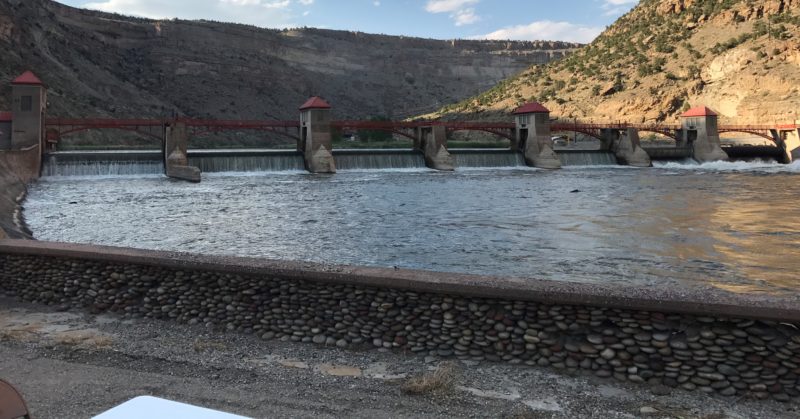You’ve been hearing a lot from us lately about a project on the notoriously troubled part of the Colorado River near Grand Junction called the 15-Mile Reach.
You’ve been hearing about it because we’re so excited about the potential impact, and proud of the diverse collaborations involved.
If you’ve missed it, here are the cliff notes:
- The 15-Mile Reach is a stretch of the Colorado River known for flows that fall so low they can fail to support native federally endangered fish species. Flows often fall low twice yearly—in early spring and in late summer through early fall (spring because the snow that feeds rivers has not yet begun to melt, and Fall because it is the driest part of the year).
- Just upstream of the 15-Mile Reach is the Grand Valley Power Plant (GVPP) – which is operated by our partners, Grand Valley Water Users Association (GVWUA) and Orchard Mesa Irrigation District (OMID). It’s a hydropower plant that was built in the 1930s.
- GVWUA and OMID have senior irrigation water rights, and they also divert water for use in the power plant that returns to the Colorado River just upstream of the 15-Mile Reach. Which is very good for the river, as well as the local electrical grid.
- Colorado Water Trust, GVWUA, and OMID recently completed an innovative agreement to allow us to buy water upstream to be delivered to the GVPP. That means our water can be delivered to the plant, used to generate hydropower, and then returned to the Colorado River during times when the 15-Mile Reach is in need. The aim is to keep the river at healthy flows to support native fish passage and spawning habitat.
Well here’s what’s new! We just did it! Last week!
You may be thinking, well, wasn’t this a particular wet year? Why was the river in need?
We didn’t think it was going to be, either. But as you’re probably aware, Colorado can really throw curveballs with its weather, and those curves are breaking more and more lately.
Despite a promising water year, with snowpack levels not seen since at least 2011, and a wet early Summer on top of it, the Colorado and many other rivers in the state (including the Yampa, another of our top priorities) suffered severely decreased flow starting around Labor Day, due to a very hot, dry August. Even the GVPP wasn’t getting enough water to operate to its current capacity. We had the legal agreement in place, and we had money from our annual RiverBank celebration and from the generous folks at Coca Cola to buy water in the Colorado, so why not use it now?
By purchasing water (that is owned by the Colorado River District, so a big shout-out to those folks as well for the very fast turnaround) from a nearby reservoir, we helped to boost flows in the 15-Mile Reach and generated clean electricity for six days. Our releases complemented the water dedicated to the river by the U.S. Fish and Wildlife Service’s Recovery Program and the Historic Users Pool, a group of western Colorado water users that release water from Green Mountain Reservoir. We’re now working on long-term funding for these purchases, from Coca Cola and others, and in cooperation with the U.S. Fish and Wildlife Service, the Colorado River District, and of course our two water user partners, we hope to help keep the river healthy for many years to come. Thanks as well to our crucial project partner the Walton Family Foundation, which originally suggested the idea and supported its development.
Projects like 15-Mile Reach are what drives us here at the Water Trust. The problems we address are complex, politically and technically challenging, and getting more so. The idea that a “wet” year could turn into a semi-emergency because of 45 days or so of dry heat would have been remarkable fifty years ago. These days? Not really that surprising. But this is the challenge we face, and we get excited by finding creative ways to meet them that benefit multiple river users.
When flows decline, which we all expect in the years to come because of the changing climate and growing population, the need to share our water becomes even more important. And harder to arrange. But that’s the Water Trust’s sweet spot, and we’re happy to be able to do it on that most American of rivers, the Colorado.
